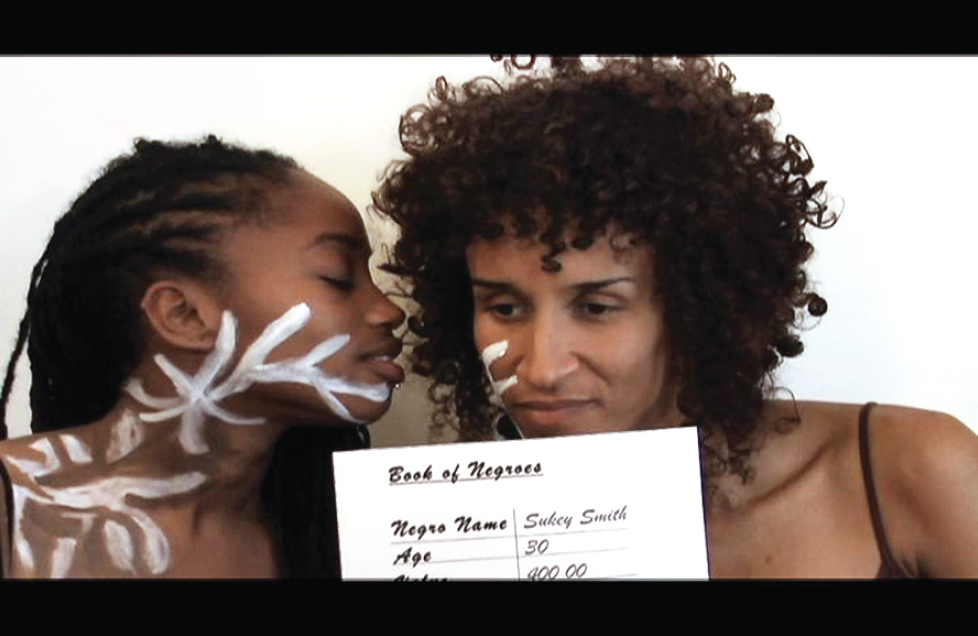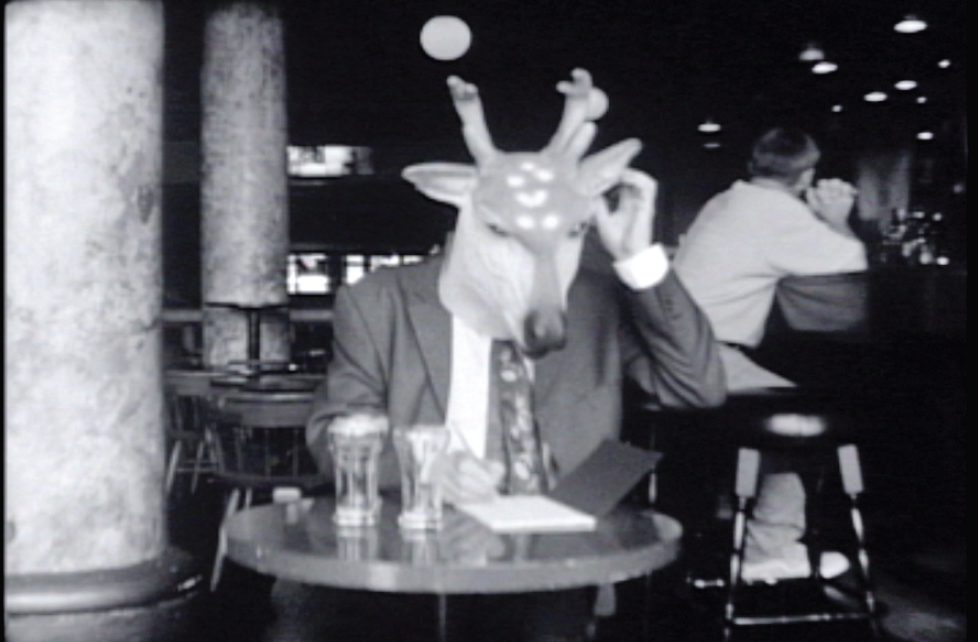Streaming Alterity
“Streaming Alterity” questions notions of identity and otherness through a variety of perspectives. Seven Canadian women artists grapple with concepts of being and belonging, or the lack there of, through diverse viewpoints and mediums. This smart exhibition, curated by Carla Garnet and Pamela Edmonds and featuring works by Rebecca Belmore, Emelie Chhangur, Johanna Householder, Pamila Matharu, Nadia Myre, Natalie Wood and Christina Zeidler, presumes an intelligent and engaged audience, while leaving ample room for discovery at the Art Gallery of Peterborough.
While much of the work has been created within the last few years and previously exhibited, the curation places these pieces in a different context, elevating discourse and meaning through the conceptual exchange among the work. One of the powerful threads throughout the exhibition is the notion of performativity in identity. Each artist in this show adds insight and dialogue to feminist inquiries about selfhood, while asking broader questions about how self is understood and enacted.

Natalie Wood, Will, 2011, single channel video, 3 minutes, digitally printed book, 5 x 1’. Photographs: Wayne Eardley. Images courtesy the Art Gallery of Peterborough.
Johanna Householder’s video installation, “A New Hope,” 2009, is a cultural plea. Householder, who is dressed like Princess Leia, pleads, “Help me, Obi-Wan Kenobi; you’re my only hope,” in a hologram-like video. Adjacent to her cry for help is a corresponding video of Princess Leia holding bank statements showing empty accounts and zero GICs. This piece speaks to aging and loss of security during a global economic collapse. The performance of Princess Leia unravels to reveal an aging icon deeply concerned about her future.
The relationship between older and younger generations is foundational to Natalie Wood’s video Will, 2011. Based on the poem Legacy, by black, lesbian poet Pat Parker, Will examines what mothers impart to their daughters—qualities such as pride, strength and rage. While each of these attributes is whispered from a black mother to her daughter, the video jump-cuts between the murmurs as white branches are painted across the bodies and faces of the women, the secrets finally appearing fixed on their bodies. The future, its youth and how information is shared are explored in Pamila Matharu’s installation Future Utopias, 2011, where the artist examines the role of power in the classroom both in terms of pedagogy as well as history. Antique desks face a large map titled “The Possession of World Powers, 1914” to expose colonialist traditions and the transfer of hegemony in education.

Christina Zeidler (made in collaboration with Bill Burns), Reverse, 2010, Super 8 and digital video, 2 minutes 30 seconds.
Aboriginality and womanhood are explored in Rebecca Belmore’s photographic works Untitled 1, 2, 3, 2004, where the artist is bound in swaths of white fabric. Belmore’s body hangs like a cocoon, her black hair cascading down. Her wrapped body is an immobile signal of cultural sacrifice and corporeal surrender. The body as a site of beauty, contention, mystery and falsehood is another theme throughout much of the exhibition. Nadia Myre’s video Wish, 2002, is a videotaped performance pared down almost to abstraction. The image of the artist jumping up and down is reduced to a black, bouncing slit on a barren, white background. It is touching and sensitive, while barely appearing human. For Emelie Chhangur in Crossing the River, 2010, the body as a site of conflict and ethnicity is the subject of her photographic and video work, where presenting as white or East Indian or black determines identity and its social expectations. In Christina Zeidler’s video Reverse, 2010, gender is mutable as the voice of a man speaks of a young girl’s experience. The video was created in collaboration with artist Bill Burns. Burns, dressed in a suit and large deer head, suggests a polarity between the body and its representations. While clearly male but half animal, Burns talks about the experience of being a girl and losing her virginity. There is a palpable and illuminating tension between a man’s voice, the doe-eyed head and the vulnerability of a young girl’s story about her body.
The themes throughout the show pose extensive questions about identity and how it forms our apprehension of the world. This is no small feat. Yet, “Streaming Alterity” is an exhibition that presents the multiplicity of women’s experience in an accessible way. By critically engaging a concept of otherness inclusive of race, gender, sexual orientation, aging and hegemony, “Streaming Alterity” offers a breadth of knowledge and experience. ❚
“Streaming Alterity” was exhibited at the Art Gallery of Peterborough from January 13 to March 4, 2012.
Steph Rogerson is pursuing her PhD in Communication and Culture at Ryerson University.

